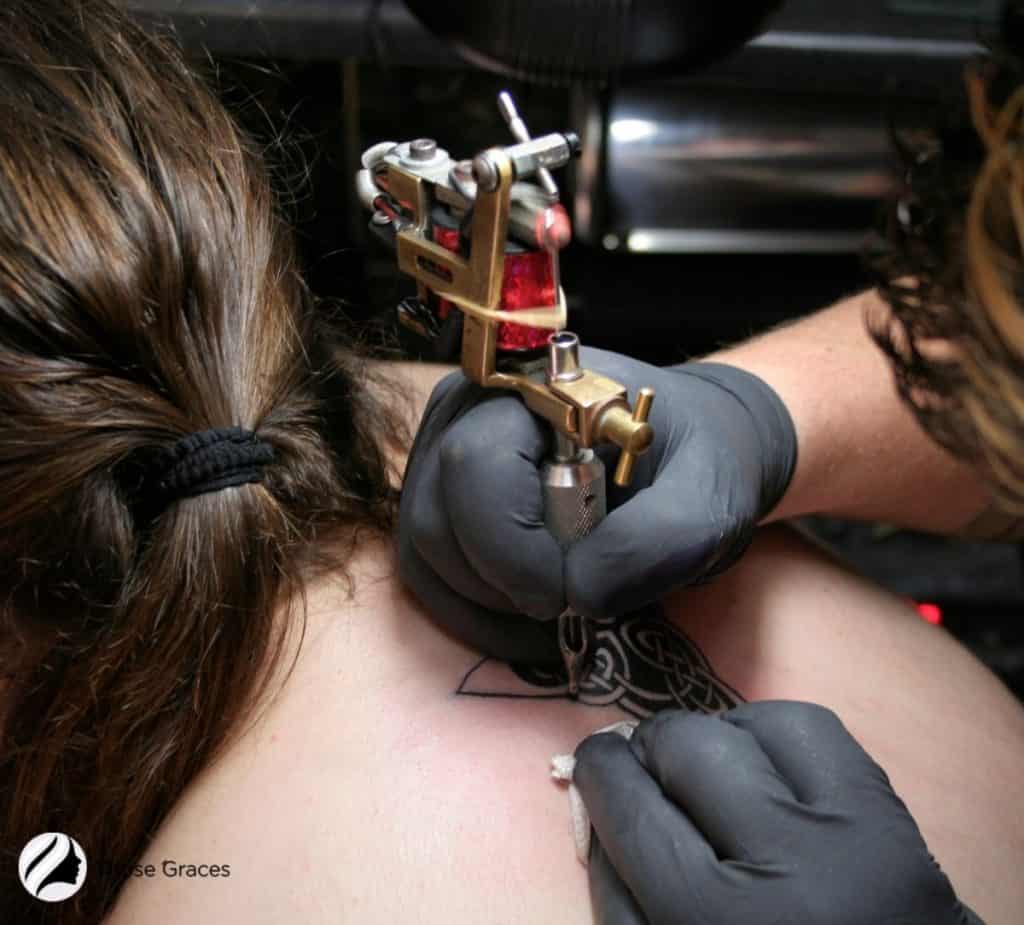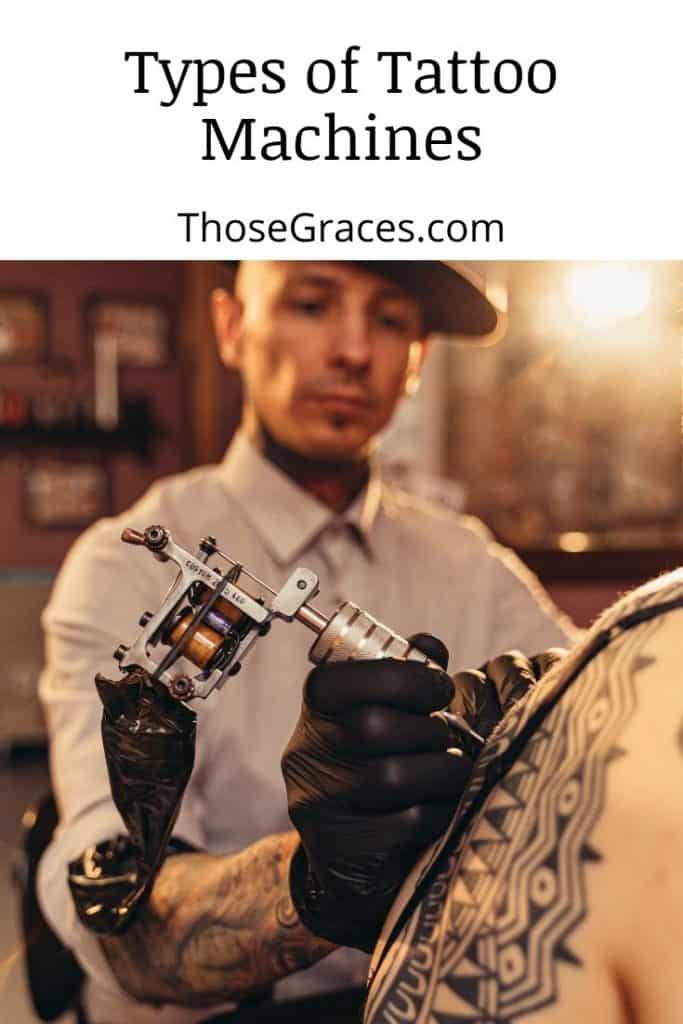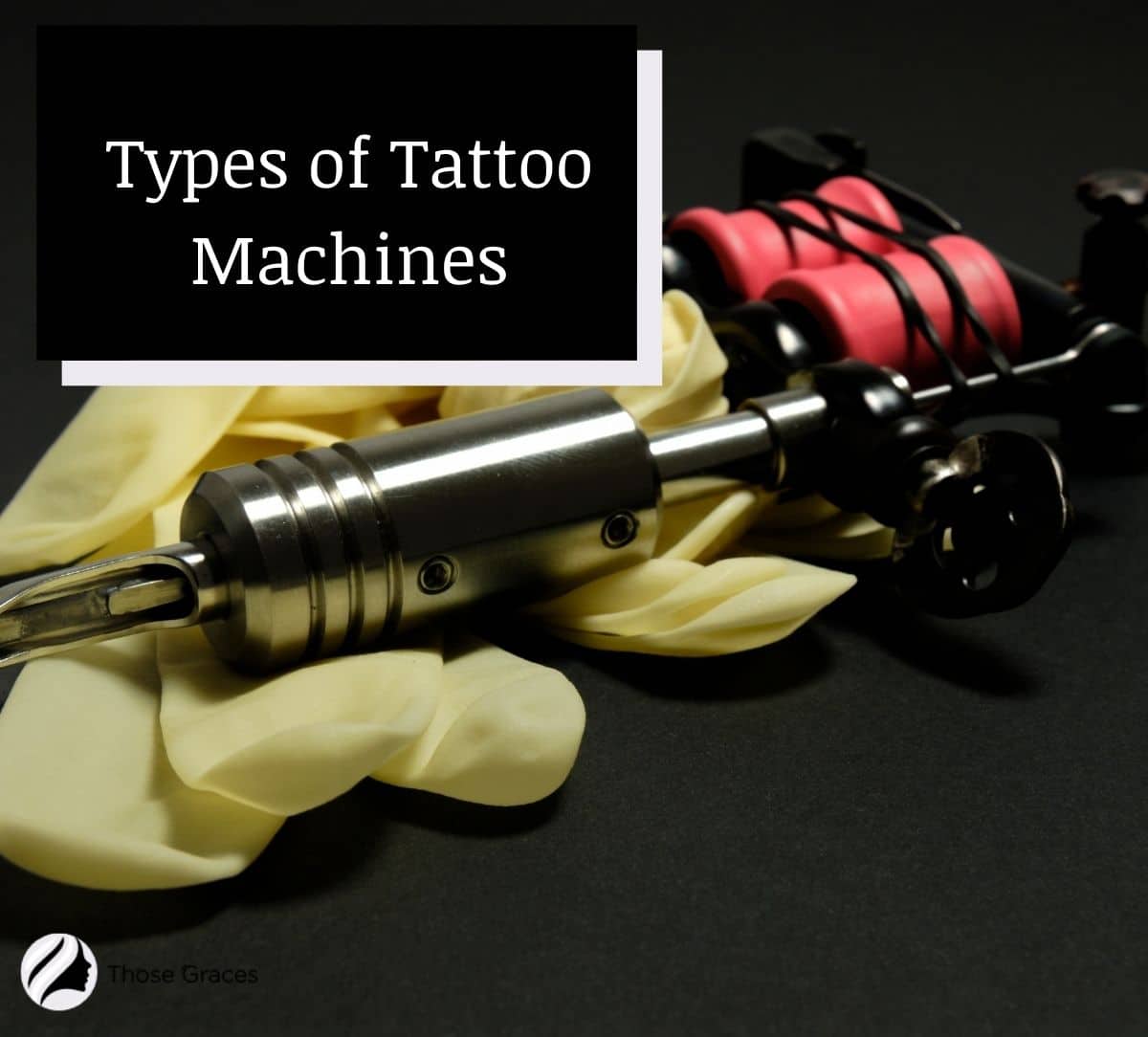Are you wondering how many types of tattoo machines are there?
If you’re new to the tattoo world, it’s natural to be confused about all these different tattoo guns and how they work.
Fortunately, I’m here to talk about the different types of tattoo machines and their pros and cons.
Just keep reading.
READ MORE: Best Permanent Makeup Machine
Table of Contents
4 Types Of Tattoo Machines And Their Main Characteristics
It’s easy to think about tattooing as something that belongs to the modern era. But the earliest evidence of tattooing goes back to 3370 BC, or more than 5,000 years ago. (1)
According to archaeologist Aaron Deter-Wolf, “The first tattoo sessions were created by using sharpened pieces of bone or ivory. Artists cut the human skin and rub some soot as the tattoo ink in the wounds.” (3)
Nowadays, the tattoo industry has evolved with different technologies and machines to match your tattooing style and art style.
The Ultimate Tattoo Supply stressed that “One of the most important things you should always have when you tattoo is a good tattoo machine. It’s like a paintbrush that you use to make beautiful art.” (4)
Jens Bergstrom, Founder of Tattoo and Piercing Education added that “Using the right and sterile tattoo machine is very important to getting good results.” (5)
A tattoo machine is an essential part of any tattoo start kit. However, beginning tattoo artists often struggle to find the best tattoo machine to suit their style.
So, what are the different types of tattoo guns? We have four main types – coil, rotary, pneumatic, and hybrid.
Related: Best Tattoo Guns for Beginners
1. Rotary Tattoo Machines
The rotary machine appeared first in 2010 when the technology evolved enough to produce small but powerful electric motors.
Rotary tattoo machines are still popular today because they’re easy to use and relatively low-maintenance.
They also produce less vibration than other types of machines, which makes them less likely to cause fatigue or hand cramps.
MUST READ: How Much Are Tattoo Guns?
Rotary Tattoo Machine Characteristics
To know more about how to use this professional tattoo equipment, let me tell you about its characteristics.
- Frame. It is the thing that holds the thing together. It is made of aluminum alloys, metal frame, or other sustainable materials
- Electric Motor. It is the part that gives power to the rotary tattooing machines.
- A Design Component. It stops the needles from moving in the opposite direction. The eccentric moves in both directions at the same time.
Remove it with strings, rubber bands, slide rails, spring-loaded levers, and a longitudinal component with some grooves.
Check out this cool characteristic of the rotary tattoo machine.
@wgraciatattoos #tattoo #explore #fyp #rpm #rotarytattoomachine #slomotion #slomo #tattooslove ♬ original sound – wgraciatattoos
WORTH CHECKING: What is the Difference Between Coil and Rotary Tattoo Machine?
How Do Rotary Tattooing Machines Work?
Like sewing machines, this type of tattoo gun work by using a motor to make a set of gears go around. This, in turn, makes the needle go up and down.
These types of machines are less painful because they create less vibration and skin irritation.
However, this type of tattoo machine can’t create as much detail as some newer types of machines, and they can be more prone to causing skin irritation.
Here are the top rotary tattoo machines.
The Types of Rotary Tattoo Guns
- Direct drive. The motor shaft directly drives the needle cartridges and gears, which in turn drives the needle up and down.
- Pen. This one type called tattoo pen rotary machine boomed in popularity after Cheyenne Hawks’ introduction to the tattoo industry. This is where disposable needles started.
- Slider. Through a longitudinal element, the entire machine sends the movement to transfer ink in the cartridge to the targeted layer of skin. It is not very sensitive to the power supply’s power level.
- Commutatorless motor machines. Known for being lightweight speedy, this type of machine is perfect for long tattoo sessions.
Rotary tattooing machines are less painful because they create less vibration and skin irritation, which is good for sensitive skin types.
Compared to coil tattoo machines, rotary tattoo machines move needles in and out of the skin more smoothly and evenly.
Here is an instructional TikTok video on how to assemble rotary tattoo machines.
@olympe_ktattoos There are LOTS of ways but this is my method! #tattoo #tattooartist #tattooapprentice #howtotattoo #tattoos #tattoomontreal #montreal #quebec #queer ♬ Monkeys Spinning Monkeys – Kevin MacLeod & Kevin The Monkey
2. Coil Tattoo Machines
You’d be quite shocked to learn that the older coil machine for tattoos goes back to 1891. (1)
Back then, Sam O’Reilly had the idea to use Thomas Edison’s electric pen to introduce ink into the skin and came up with the idea of a rotary machine.
But Thomas Riley came with the idea of a single-coiled machine, while Alfred Charles South patented the two-coiled tattoo machine we know today. (2)
Here’s a video on how the coil tattoo machine works.
Coil Tattoo Machine Characteristics
First, let’s talk about the main characteristics of the coil machine so that you can understand how it works:
- Frame. It’s made from light, strong material, such as steel or non-ferrous alloys. Most coil machines weigh around 130 grams.
- Two electromagnetic coils. Each coil has several wraps – layers of copper wire (from 8 to 16). The more wraps the coil has, the more powerful the electromagnet is.
- Capacitor. It eliminates sparks when opening and closing the electromagnetic circuit.
- Armature bar. It pushes the tattoo needles up and down the skin with a hammer-like motion when the electromagnetic current passes through the coils.
- Two springs. These metal plates come in pairs – one to carry the bar into the frame, one that is fixed, and a contact.
- Contact Screw. You use it to control the piercing frequency and tattoo needle depth.
How Do Coil Machine Work?
Coil machines use electromagnetic current, which passes through the coils to move the spring-loaded armature bar. The bar vibrates up and down, which pushes the needles into the skin.
Coil machines are very versatile and precise, allowing a professional tattoo artist to create smooth and refined lines and more intricate works.
Watch this video for a detailed explanation of how coil tattooing machines work.
However, the coil machine is noisy, creating that familiar buzz you hear in tattoo shops. And it’s heavier than other types of tattooing machines and requires experience to achieve good results.
Types of Coil Tattoo Machines
Mainly, there are two different types of tattoo machines for your pair of coils.
Coil tattooing machines vary according to the types of needles and cartridge needles used. They complement your adjustments for that quality ink design.
- Liner Machine. These are perfect for crisp designs and sharp lining before the coloring because the high-frequency range is from 120Hz to 150Hz.
- Shader Machine. The perfect machine for a colored tattoo. It has a lower speed at 60Hz to 100Hz, which helps with color absorption.
RELATED: Shader vs Liner Tattoo Machine
Liner tattoo machines cannot be used for coloring. On the other hand, a shader tattoo machine is meant for soft colors and cannot be used for lining.
Here is an insightful video on the pros and cons of coil tattoo machines.
@inkedmagazine Nick Matic talks coil #TikTokPartner #LearnOnTikTok #CoilMachine #Tattoo #TattooMachine ♬ original sound – Inked Magazine
3. Pneumatic Tattoo Machine
A pneumatic tattoo machine uses an air compressor for its power mechanism. It can be easily sterilized and hygienic, lightweight, and easy to use.
No one had ever seen anything like it when first debuted in the early 2000s.
Due to the increased cost, tattoo artists were hesitant to transition from their more known coil and rotary tattoo equipment.
Here is a cool video of a pneumatic tattoo at work.
Even though it is a less common tattoo gun, its advantages make it the best option for you.
The most silent type of tattoo machine is a pneumatic tattoo gun.
There are no humming electric motors or noisy, buzzing coils because compressed air is used as the source of power.
You can modify the needle’s speed by adjusting the air pressure. It’s small and light, making it ideal for long inking sessions.
CHECK: Tattoo Machine Anatomy
4. Hybrid Tattoo Machines
Putting together the idea of the two different tattoo machines, it features coil tattoo guns and rotary tattoo guns in one machine.
This tattoo machine is a powerhouse that has been meticulously handcrafted. The frame’s design allows for a wide range of combinations.
You can customize it to do any tattoo [3] job, although it’s a little tough to work with because of its excellent liner, especially in larger groups.
Checkout this video of a hybrid tattoo machine.
Although a hybrid device resembles a traditional coil machine, it is smaller, quieter, and lighter than a rotary. A professional tattoo artist must use it with needles rather than cartridges.
Take a look at this comparative summary about the types of machines to help you choose the best fit for your blooming tattoo career:
Rotary
Pros: Low maintenance, fewer vibrations, less hand fatigue.
Cons: hard to repair when broken, prone to skin irritation, fewer details.
Coil
Pros: Very detailed, and crisp output
Cons: Noisy, heavy, causing hand carpal problems
Pneumatic
Pros: Lightweight, hygienic, easy to use
Cons: Pricey, less common
Hybrid
Pros: Lightweight, hygienic, easy to use
Cons: Pricey, less common
*Price range are based on Amazon and Alibaba Price lists.
CHECK: Cool Medusa Tattoo Ideas
How Many Types Of Machines Does a Tattoo Artist Use?
To answer how many types of tattoo machines artists use, it depends, on the set-up and design. Professional tattoo artists on average use one or more tattoo machines.
Some artists’ art style only make use of machines for lining. Others use multiple machines such as lining machine and shader machine to achieve the best result of their work.

READ MORE:
FAQs
What’s better rotary or coil tattoo machines?
Do Rotary tattoo machines hurt more?
Why are some tattoo machines loud?
Conclusion
With these four types of tattoo machines, choose the one that fits your art style and needs. During tattoo apprenticeships, practice with different machines as much as possible to find your most preferred one.
Above all, prioritize the comfort of your clients and the best artistic results. The right precision tattoo machines will mark the clients’ skin for a lifetime.

Resources:
- 1. The first practical electric motor — in a tattoo gun? | SPARK Museum of Electrical Invention. www.sparkmuseum.org. https://www.sparkmuseum.org/the-first-practical-electric-motor-in-a-tattoo-gun/
- 2. Serup J, Kluger N, Bäumler W. Tattooed Skin and Health. https://library.oapen.org/bitstream/handle/20.500.12657/25856/1004230.pdf#page=32
- 3. Aaron Deter-Wolf | Tennessee Division of Archaeology – Academia.edu [Internet]. tdoa.academia.edu. Available from: https://tdoa.academia.edu/AaronDeterWolf
- 4. Tattoo Equipment [Internet]. Ultimate Tattoo Supply. Available from: https://ultimatetattoosupply.com/pages/tattoo-equipment
- 5. Available from: https://www.instagram.com/jensatheavenlyink/?hl=en



